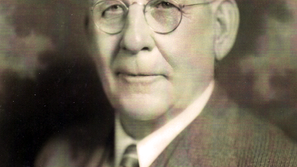Madera’s new school year begins
- Bill Coate
- Aug 19, 2020
- 4 min read
COVID-19, however, puts distance between teachers and kids
The prospect might be a bit scary for some; never before have Madera schools tried to begin a school-year with the teachers in their classrooms and the students at home.
The Tribune visited some of the local schools last week to talk with teachers and principals about what they are facing this year.
At the outset we found an encouraging show of unity; the district and the employee unions have agreed to alter the calendar so the teachers could be given some extra time for training.
Thus, on Aug. 5, 6, and 7, an Institute was held, and on August 10-15, professional training was given, with specific attention directed on what must be taught and how to accomplish that through distance learning.
By Friday afternoon, Madera Unified teachers were ready; they may have been a bit anxious, but they were ready.
This reporter looked into several classrooms. They were all decorated as if the kids were going to be there in person — well, come to think of it, in a sense, they will be; the computers those teachers are using will catch everything — the teacher talking, videos, whiteboard presentations, everything. In the school cafeterias, tables were loaded with what teachers are calling “bankers’ boxes.” There is one for every student, and they are filled with everything they will need for the first quarter — pencils, pens, crayons, art supplies, paper, instructional packets, and if the student does not have a Chromebook, he or she will find one in his or her banker’s box.
On Monday and Tuesday, the parents went to the schools and picked up their childrens’ bankers’ boxes. On Wednesday morning school began.
All of the schools are following an Instructional Continuity Plan that has been issued from the district office. It addresses the widely varying needs of every grade level. Each school and every grade level has been following the plan in professional learning groups.
There is no single scenario that would describe what is going on in all of Madera’s schools. The best we could do was to choose a representative case, so we have done that — a 5th grade class in a k-6 school.
The representative teacher has 32 students. She has met their parents on-line and a few of them in person. Judging from the decorations on her wall, she has been spending a lot of time in her class room over the summer and she is ready to go, with confidence.
Each of her students has an electronic device (most likely a Chromebook), which is their pathway to their teacher and her pathway to them. Every morning at 8 a.m., they all turn on their computers and go to something called “Google Classroom” to see if there are any special announcements for the day, while the teacher takes role. Then it is time for her to meet with small groups for intervention or some additional lessons. By 9:30, everyone is ready to begin Instructional Block No. 1.
Before going further with our representative teacher, we need to learn two new words as they apply to education: “synchronous” learning and “asynchronous” learning. In the first case, it means the student is receiving direct instruction from the teacher. In the second case, the student is working more or less independently on work that has been assigned. Students can expect both kinds of learning this year (just as they always have).
Instructional Block No. 1, which is an English/language arts warm-up, lasts from 9:30 to 10:30. After some live instruction, students work asynchronously for the remainder of the learning block. Following that, there is a 15-minute break, until 10:45, when the second block begins with live (synchronous) instruction on line, via Zoom. Instruction during this block will deal with a combination of English and Social Studies. At the conclusion of direct instruction, the students work asynchronously. On Thursdays, the students will have P.E. during this time.
From 12:15 to 1 p.m., is lunchtime, but unlike normal conditions, the students obviously won’t go to the school cafeteria. They have already picked up their lunches for the week, so they will just eat at home and get right back to work.
After lunch comes Block No. 3, which runs from 1 to 2:30. Math is the subject, and as was the case in Blocks No. 1 and No. 2, students work synchronously (direct instruction) and asynchronously (independently). Before class is dismissed, assignments are given, and the students sign off. The teacher, however, continues. For the next hour, she has formal office hours. Students or parents can contact her with questions, comments, or concerns.
Wednesday is a special day of the week. Students work asynchronously on assignments while the teacher assists individuals or small groups. Wednesday is also the day the Child Nutrition Department delivers meals to each school for pick up by the parents. Each student’s lunch box contains 10 meals for five days — five breakfasts and five lunches.
Distance learning in middle schools and high schools operate much the same as in the elementary schools except their schedules are vastly different. Their classes are conducted in blocks and meet on alternating days. For instance, in high school, periods 1,2, and 3 meet in extended blocks on Monday. On Tuesday, periods 4,5, and 6 meet. This schedule is repeated on Thursday and Friday.
On Wednesday, as is the case in elementary school, high school students will be assigned work to complete asynchronously. Teachers will then be available to work with smaller groups of students or hold parent/teacher conferences.
The middle school and high school students will switch Zoom sessions during the day, much as they changed classes when on campus. This means that they will meet with the first-period teacher in a Zoom session and then transition to a different Zoom session for their next class.
Taken as a whole, as one stands in a classroom while instruction is going on, things are working quite well. Teachers are teaching, and kids are asking questions. When the lesson is over, the kids move on asynchronously. Those who still have questions engage with teachers synchronously. It is true; the students can’t see each other in the flesh, but they are interacting with each other, nevertheless. They can see each other, and they can hear each other. They can all see and hear the teacher. It is almost like being right there. That’s why it is called virtual learning, and it is working in Madera.


























Comments